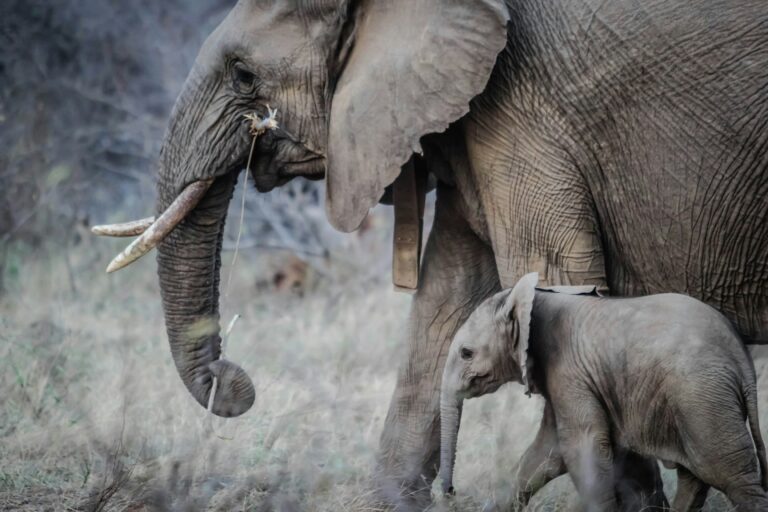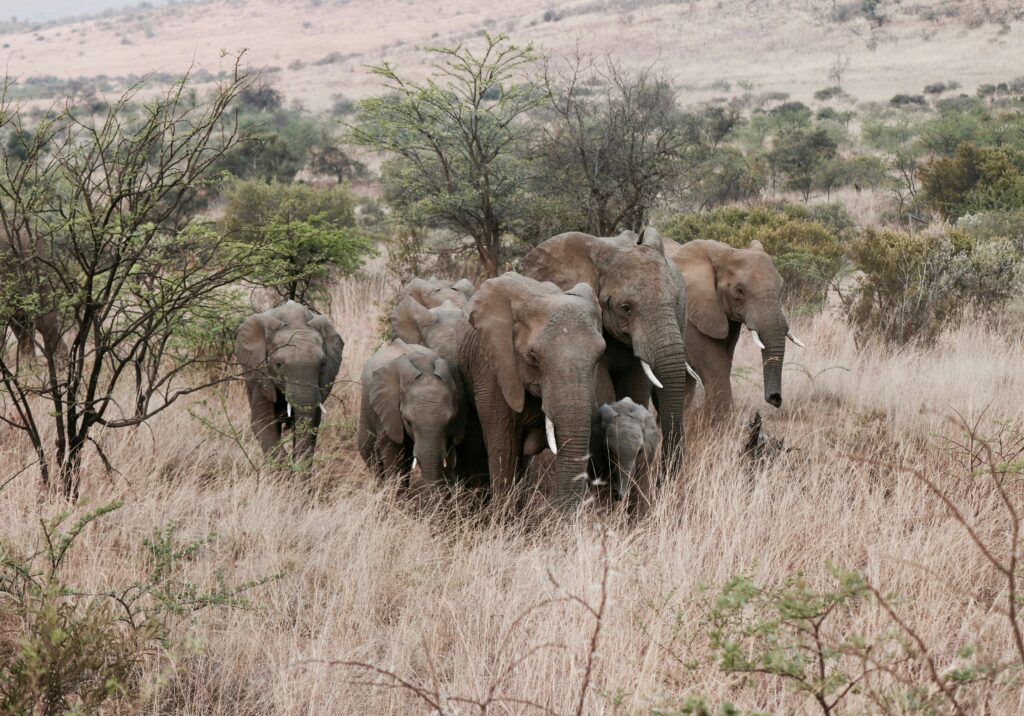3 Interesting things to note about African Elephants
It’s hard to overlook the majesty of a full-grown savannah elephant. The largest land animal on earth, it has inspired legend, worship, reverence, and fear across numerous civilizations for thousands of years. Some of the oldest San rock paintings in Africa drawn elephants.
While there’s no adequate way to prepare you for your first wild elephant encounter; you’ll have to trust us, it’s breathtaking, we can at least feed your appetite for the experience. Here are a few qualities that make these enormous creatures so extraordinary.

Massive and extremely Intelligent
With their awe-inspiring appearance (adult savannah elephants weigh up to 6.000 kg and can stand up to 4 meter tall), otherworldly strength (using their prehensile trunks, they can easily uproot entire trees and lift as much as over 300 kg), and outlandish appearance (including tusks up to over 2 meter long and flapping ears the size of boat sails), it’s easy see why elephants’ physical presence evokes wonder. Equally awe-inspiring are some of their less-obvious bodily skills, like their ability to “hear” the movements of other elephants miles away by detecting ground vibrations with their feet; and a fine-tuned dexterity that lets them pluck a single berry from the ground.
Elephants’ intelligence and sensitivity, however, may well be their most formidable traits. Stories of the animals’ cleverness and sharp memories have abounded for centuries. But only in recent years have scientists been able to collect proof that elephants’ problem-solving and tool-using skills equal those of other brainy species like chimpanzees and dolphins. Elephants also have a highly evolved sense of both self-perception – they are one of the only species that can recognize themselves in a mirror – and empathy. Researchers have documented elephants comforting one another when they are distressed, assisting one another when they are injured, and grieving after the loss of a herd member. Some elephant families have even been witnessed revisiting the bones of deceased loved ones years after their death.
.
Elephants live in multigenerational herds, each led by a matriarch – typically the oldest, largest female – and including as many as 70 other females and their young. The herds function as close-knit extended families; members walk together, eat together, and tirelessly work together to protect and care for one another’s calves in a behavior known as ‘alloparenting’. Since babies require up to five years of rearing before they reach adulthood, this is an extensive cooperative labor of love.
Matriarchal herds play a crucial role in maintaining Africa’s grassland and forest ecosystems. Prodigious eaters, elephants can each consume up to 140 kg of grasses, roots, leaves, tree bark, and fruit in a single day! and in their resumed search for food, they end up shaping the landscapes around them. As they eat their way through woodlands, herds clear pathways for smaller species like antelope and zebra to forage, too. The seeds they disperse through their dung also help to germinate a diverse array of plants and shrubs. In dry-season months, elephants also use their tusks to dig into dry riverbeds for water; their excavations create watering holes where other animals can drink.


Threatened – but hopefully recovery
In recent decades, African elephant numbers have drastically decreased, primarily because of poaching and loss of habitat. However, recent conservation efforts in nations such as Kenya and Tanzania are proving effective. Thanks to the deployment of anti-poaching units and technology, stringent poaching laws, and extensive community education, elephant populations are recovering in national parks like Kenya’s Amboseli and Tanzania’s Tarangire.
To discover more about African elephants and experience them in their natural habitat, consult with an Afrimine safari specialist to begin organizing your memorable wildlife expedition.
Your ‘AfrimineMoments’ are waiting for you!
